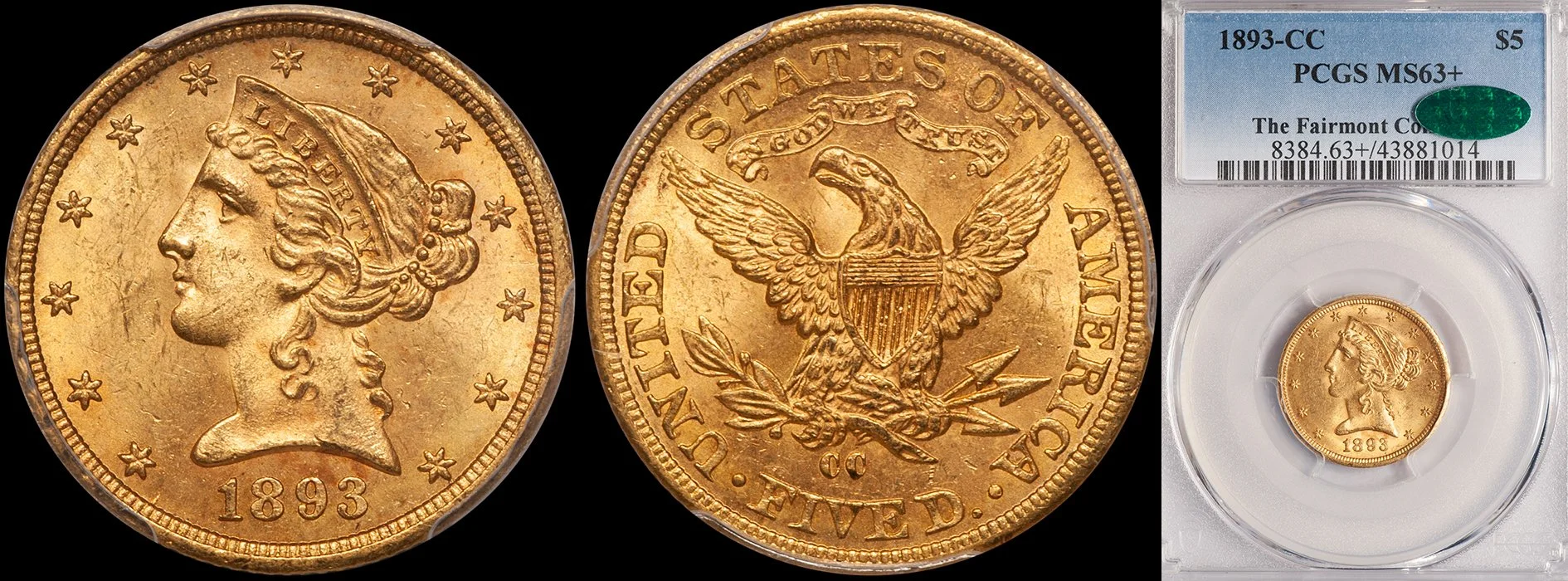The Market for New Orleans Gold
/How has the market for New Orleans gold changed in the decade and a half since the first edition of my book on the subject was written? I can think of a number of changes including the following six: 1. Very few No Motto half eagles and eagles have changed in terms of comparable rarity, especially in higher grades. The one exception is the eagles and, to a lesser degree the double eagles, that were found in the S.S. Republic treasure.
I would have expected a good number of half eagles and eagles from the 1840’s to have been graded MS60 to MS62 in the past few years. Even with the obvious Gradeflation that has occurred between the early 1990’s and the present, the certified populations of Mint State No Motto New Orleans half eagles and eagles is incredibly low. Clearly, these coins are genuinely rare.
2. All of the post-1883 New Orleans eagles are far less rare in Uncirculated than once believed. However, all of these dates remain very rare in MS64 and above and a number are still unknown in this grade.
Hundreds and hundreds of baggy Uncirculated New Orleans eagles from the 1890’s and early 1900’s have turned up in Europe in the past decade. But because they were shipped overseas and roughly handled, very few of these are likely to grade higher than MS63. Virtually no previously unknown Gem New Orleans eagles from the 1888-1906 era have turned up in the past fifteen years. I find this a bit of surprise and would have expected at least a few to have been discovered.
3. I greatly underestimated the overall rarity of certain very popular issues like the 1839-O quarter eagle, 1854-O Three Dollar and 1909-O half eagle, especially in lower grades.
Man, are these dates common in lower grades. When estimating populations, it is easy to predict rarity in high grade but lower grade pieces are hard to account for. In virtually every major auction there are multiple examples of these dates in the VF-EF range. Clearly, they are much more common then I originally estimated.
4. New Orleans gold from the 1840’s and 1850’s is generally rarer than comparable Charlotte and Dahlonega in terms of high grade rarity and is far rarer in terms of the total number known.
The typical New Orleans half eagle from the 1840’s has around 100-125 pieces known while the typical Charlotte and Dahlonega half eagle from this era has around 175-225 known. The real difference in rarity is in the Uncirculated category. Many New Orleans issues of this era (both quarter eagles and half eagles) have fewer than a dozen known in MS60 and better grades while the numbers for Charlotte and Dahlonega issues tend to be considerably higher.
5. Surprisingly few great collections of New Orleans gold have been assembled and even fewer have been sold in the last fifteen years. Clearly, the Bass, Pittman and Milas collections were superb and contained a number of great coins. But during the past decade and a half there have been at least eight to ten major collection of Charlotte and Dahlonega sold and at least that many (if not more) that focused on early gold. Does this mean that relatively few people have assembled O mint gold sets or do the people assembling them have greater staying power than those people doing C&D mint sets?
6. Who would have ever thought that 1854-O and 1856-O double eagles would have been selling in excess of $250,000 for average quality examples? Fifteen years ago, you could buy these dates for $20,000-30,000 a piece. Today they are ten times as much and, interestingly, almost none have come up for sale in the past two years.










